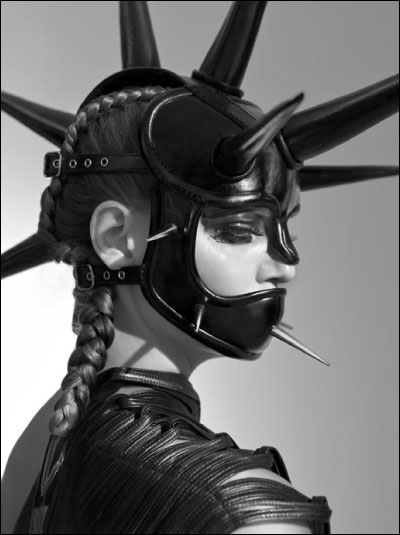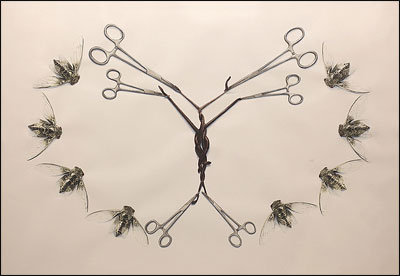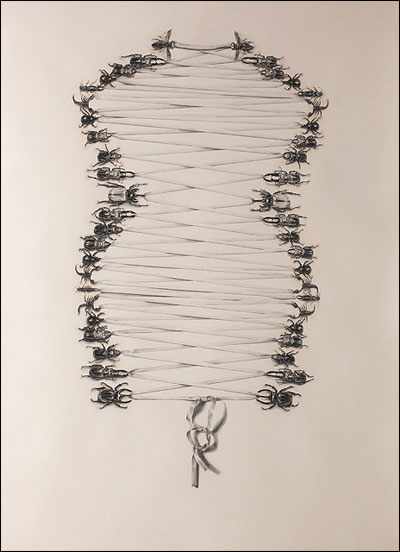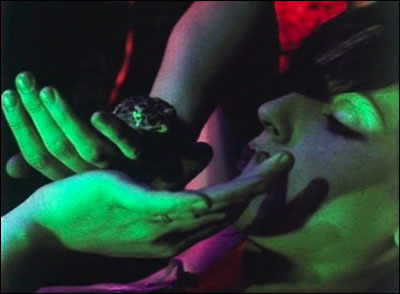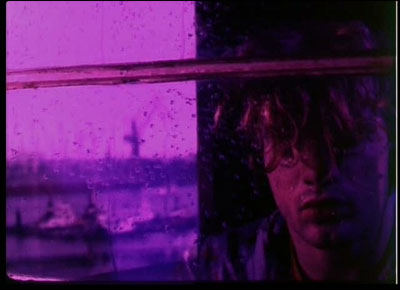
Shien Lee. Styling by Vecona. Photo by Tina Cassati.
New blog alert!
New York-based artist/performer Shien Lee – who you’ll know as the fanciful designer of the anachronistic event Dances of Vice – has launched a new blog, titled “Not Your China Girl.” In Shien’s own words:
The title of the blog was conceived in response to the frequent catcalls I’d get on city streets, which include “China Girl”, “China Doll”, “Konnichiwa”, “Ni hao”, and “Geisha Girl”, among other terms associated with The Asian Mystique. This compelled me to examine the Orientalized and fetishized filter through which Westerners frequently view Asia—and Asian women in particular—which perpetuates a subconscious racism fueled by dehumanizing stereotypes. I wish to challenge the Occidental misperceptions about Asia that are based on mythologies and sexualized for the male imagination.
My aim is not to attack or destroy the fantasy of an exotic, romantic, and beautiful Orient, which many Asians, including myself, can and do appreciate. You’ll find that many of my photos are infused with romanticized Asian imagery; even Asians possess a fantasy of the grandeur of their own history, colored by art, images, and stories passed through time. But can a beautiful thing be detached from the social inferences governed by the male gaze? Yes, and no. To analyze a dream, a fantasy, or thing of beauty calls attention to its flaws, and takes away from its wonderful mystique. Nevertheless, it is imperative to acknowledge and understand the filters that contort our perspectives so that we can see ourselves and the world in which we live more clearly. My goal is to call attention to the issues of race and sex, fantasy and power in representations of Asian culture.
By simultaneously appreciating and examining lavish Orientalist imagery through a feminist lens, Shien tackles an interesting set of issues that often crop up in anachronistic/decadent movements. Within the steampunk subculture, questions are regularly raised about whether or not certain ideals ganked from the Victorian era have reinforced a colonialist narrative. In gothic/industrial spheres, conflicts often flare up around longstanding presumptions regarding whiteness (why has there never been a dark-skinned cover model in 12 years of Gothic Beauty? Why was Side-Line “stunned“, in 2010, by the black lead singer of O. Children?), misogyny (the phenomenon of Combichrist), and supremacism (the racist gray area that begins with Death in June).
Shien clearly cares very deeply about the world that she’s creating for herself and her friends – in the case of Dances of Vice, a world of cinched waists, powdered faces, and themes that reach into a deeply gendered past. Enough to ask: What’s really going on here? How can we be more self-aware about the motifs we’re playing with? So far, the answers involve a romp through 1950s Rockabilly in China, 1920s Deco Japan, and a thoughtful post titled “On the Asian Fetish, Why Asian Women Date White Men, and the Remasculation of the Western Man“. Throw in some gorgeous Pinterest finds, and the blog becomes an addictive mix of analysis, pop culture, fashion, and art.
Congratulations on your new platform, Shien… we’ll be reading!




